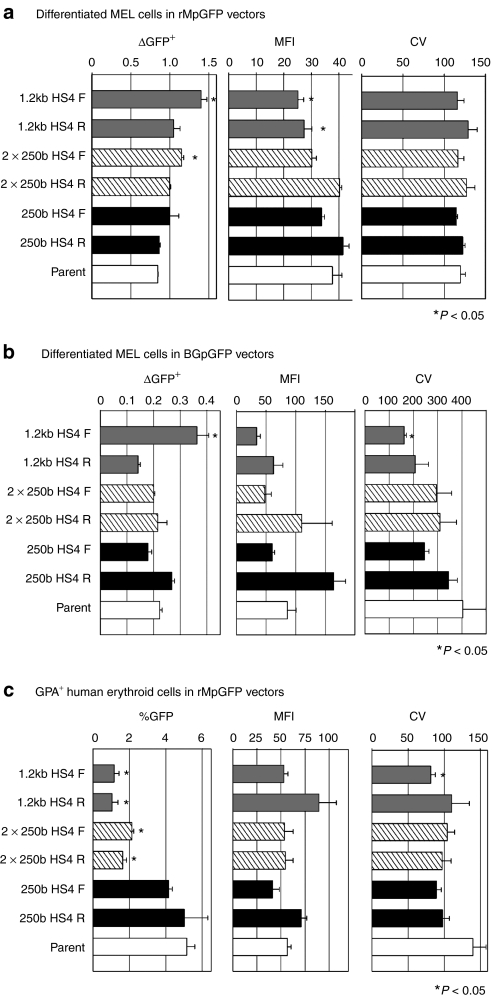Figure 3.
Function of forward- and reverse-oriented insulators in differentiated MEL and human erythroid cells. To evaluate whether insulated vectors could escape from position effects, we evaluated GFP expression by ΔGFP+ (%GFP in differentiated cells divided by %GFP in undifferentiated cells), mean fluorescent intensity (MFI), and coefficient of variability (CV). In (a) rMpGFP vectors, insulated vectors had higher ΔGFP+, lower MFI, and similar CV (N = 3, P < 0.05 in one-way ANOVA). In (b) BGpGFP vectors, insulated vectors had similar ΔGFP+, MFI, and CV, except for the vectors containing 1.2k HS4 F (N = 3, P < 0.05 in one-way ANOVA). In (c) GPA+ human erythroid cells, which originated from transduced CD34+ cells, the two larger insulators yielded lower %GFP (N = 3, P < 0.05 in one-way ANOVA). Although the insulated vectors appeared to have lower CVs, there was no significant difference with the exception of the 1.2k HS4 F vector in BGpGFP vectors and GPA+ cells (N = 3, P < 0.05 in one-way ANOVA). ANOVA, analysis of variance; GFP, green fluorescent protein; HS4, hypersensitivity site 4; MEL, mouse erythroleukemia.

